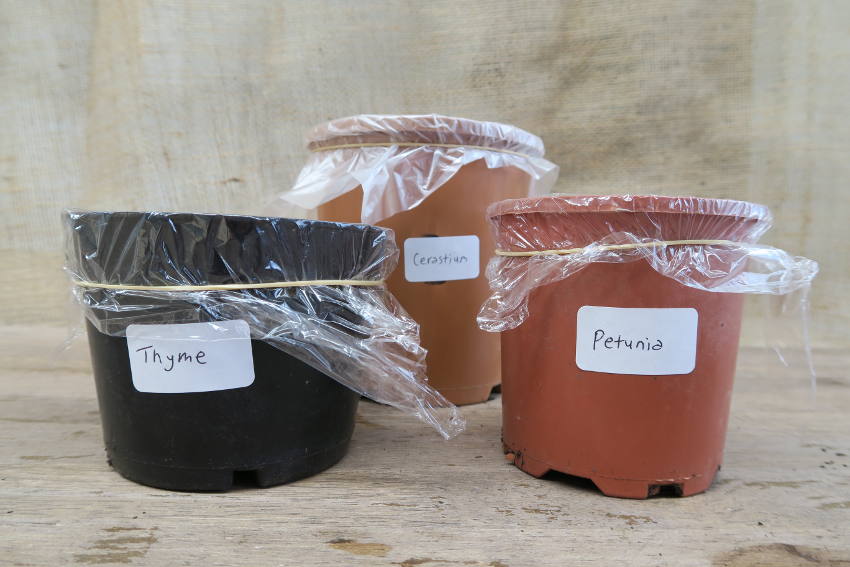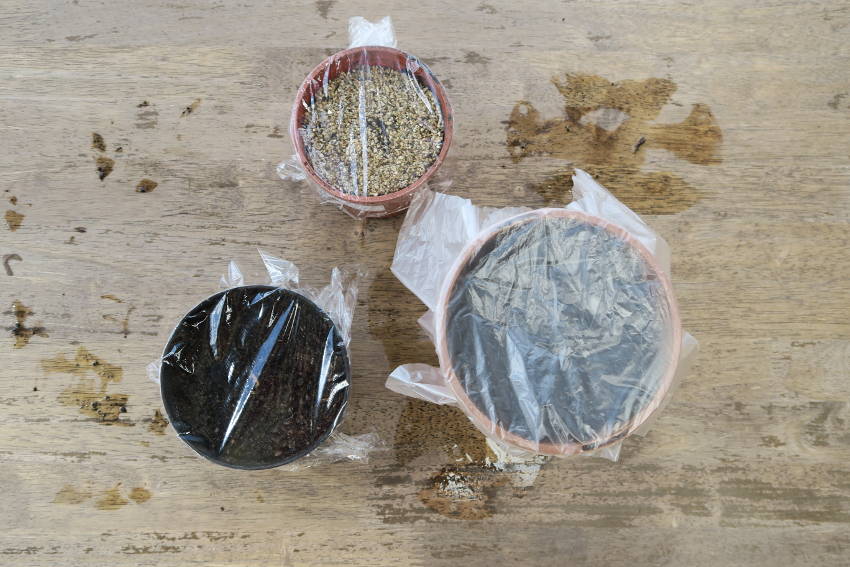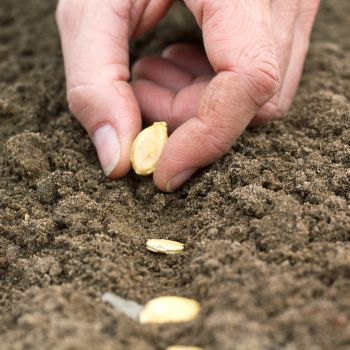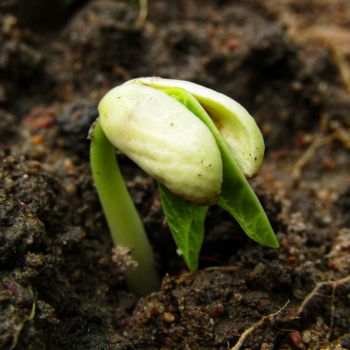Germination is a critical stage in a seed's life. In their fragile embryonic state, seeds need stable conditions or they can die before they ever really get going. Perhaps the most important factor is adequate moisture. Once germination is underway, a temporary lack of water can kill the seed surprisingly quickly.
Unfortunately, it's easy to overlook the simple task of watering in the bustle of everyday life. If you're sowing in small pots in warm conditions, they can dry out in just a few hours, with disastrous results for your seeds.
But heavy-handed over-watering can be just as harmful, swamping the seed and risking rot setting in.
Providing Greenhouse Conditions
Luckily, there's a straightforward solution to these problems. Giving seeds their own mini-greenhouses locks in moisture and warmth, taking watering issues mostly out of the equation.
Commercial seed trays with clear lids are one popular solution, but gardeners are a resourceful bunch who love to improvise. You can achieve the same effect for less expense using common household materials which would otherwise go to waste.
The basic idea is to sow your seeds in pots as normal, water them well, and then secure a layer of clear plastic over the pots to stop the moisture evaporating.
You can use any plastic you have handy, such as cling wrap, freezer bags, or even waste food packaging, and fix it into place using a rubber band or string.
Tips and Tricks
Although this is an extremely simple technique, there are a few things to bear in mind.
- Starting seeds under plastic is particularly good for slow-germinating seeds that you might pay less attention to as the days or weeks pass. It's also useful for smaller seeds sown on or near the compost surface, which dries out rapidly without a cover.
- With properly moistened compost and average indoor conditions, your pots should stay hydrated for several weeks or even months. However, check them regularly, making sure the soil surface is still moist.
- If you do need to rehydrate the soil, place the covered pot in a shallow tray filled with water, and the wick effect will draw moisture up.
- Freezer bags or cling wrap are an ideal choice of covering material but you can use any plastic you have around the house. Using clear food wrapping is a great alternative to sending it to landfill or even recycling it.
- For even better eco-friendliness, you can re-use the plastic as often as you like, so long as you wash it each time to prevent disease from building up.
- Clear plastic provides the best covering, letting you easily check for hydration and germination. But any flexible material can be used, including light cardboard or paper.
- For smaller, more fiddly pots, it saves time to place several inside a single, larger plastic bag and fold it over to seal.
- As soon as the seeds germinate, remove the covering. Tender seedlings can rot if they're in contact with the damp plastic, and will also scorch easily if left covered in direct sun.
Great gardening is about keeping things simple and letting nature do its work. This straightforward trick of starting seeds under plastic removes one major risk from the start of your seeds' lives, giving them the best chance of growing into thriving and productive plants.







